The universe is so vast and mysterious, it's almost scary when you start really thinking about it. The sun, the planets, the stars, and everything else that exists in space can be tough to fathom when you've only got experience with Earth. Even satellite imagery can be overwhelming at times!
Thoughts of the universe have the ability to make us feel tinier than ants! But despite all of that, we really can't get enough of discovering what lies beyond our comfortable Earth lives. Whole careers have been made out of the discovery of space and everything residing within the universe.
If you're a total nerd for physics, science, and the world around us in general, you're going to love exploring this amazing list of 50 things you didn't know about the universe. Trust us when we say you're going to be absolutely stunned at fact number 45. It blew us away!

Let's start with a big one - literally. Even those of us with a basic understanding of science know that the Sun is huge; so huge, in fact, that it creates a gravity field that the rest of the planets in our solar system are drawn into orbit by. But it's hard to put into words how truly massive it actually is.

If you somehow picked up every object in the solar system that has mass and put them on a scale - and we're not just talking planets here, we're talking comets, asteroids, the rings of Saturn and everything else you can find - 99% of that weight would be the Sun on its own. Actually, it's a touch more than that; we believe it's somewhere between 99.8 and 99.9%. The whole of the Earth doesn't even make up 0.1%!
Leading scientists are always on the lookout for the possibility of life on other planets. We really hope there isn't any on this one - for the sake of the residents.

Sixty light years away from the Earth, the planet hd189733b (a catchy title if ever we heard one) is a Jupiter sized planet that orbits closely to its sun, meaning that temperatures on the surface stay at a pretty constant 1,700 Fahrenheit.; and at that temperature, the silicate particles in the air turn to hot, molten glass. That's a big enough problem on its own, but when you factor in that winds on the surface blow at up to 5,400mph - meaning the molten glass would be coming at you sideways - we suspect that the Interplanetary Tourist Board advise giving this place a miss.
You know how we talked about the Sun being big? Well, photons are the opposite. They're what make up light, and they're small. Really small. Try to imagine the smallest thing you possibly can and make it smaller. Now double the effect, and you're probably somewhere close.

Photons are freshly generated in the core of the Sun, making their way slowly to the edge of our native star before they break free, but it takes them a while to travel that path - somewhere in the region of 170,000 years. This is because atomic density at the core of the Sun is extreme - around 150 times denser than water - and atoms are carried by convection, cooling and heating and being reabsorbed thousands of times before they're able to escape into space. This also means that all of the natural light we see almost older than recorded human history. Just let that sink in.
Having taken almost an eternity to get ready to start their journey, photons waste no time once they break free of the Sun, firing outwards across the vacuum of space, moving at the speed of light, away on their mission to illuminate all they come across. In our case here on Earth, it takes almost exactly eight minutes. That means if you look at the Sun (and you shouldn't without protective eyewear), you're not actually seeing where it is now, you're seeing where it was eight minutes ago.

Every second that you're awake during daylight, and able to see, you're using photons that were born in the heart of a star during a time when early humans were just learning to create and wear basic clothing.
Neptune is the outermost planet in our Solar System. It used to be Pluto, but Pluto was disqualified from planetary status a few years ago. Sorry, Pluto, but that's just the way it is. The reasons for doing so, however, are exciting - there could be many planet sized objects beyond Neptune, and some of them could be the size of Earth!

The Oort Cloud - named after Dutch astronomer Jan Oort - is thought to be a giant shell of icy elements - comets, rocks and other galactic debris - that encircles the entire solar system. Oort believed that it contains material cast out from the formation of our solar system and is the probable origin of most of the comets that pass by Earth, for example Haley's comet. Many of the bodies within the Cloud could be Earth sized - or at least dwarf planets - and we call these 'plutoids' in honor of Pluto.
There ain't no party like an Aquila party, so they say in space - or at least, they may do when we finally develop the technology to go and look at this cloud in more detail. That might take a while; the alcohol-soaked gas cloud G34.3 is 10,000 light years away.

The Cloud is enormous - 1,000 times larger than our entire Solar System - and as with all interstellar gas clouds, contains ethyl alcohol in grains of dust. As these grains passed close to the star at the Cloud's center, the dust evaporates into gas. If we were able to reach it, and condense this gas back into liquid, it would provide 300,000 pints of alcohol per day to every human being on Earth for the next billion years. Imagine the hangover you'd have in a billion years and one day...
We know this one sounds unlikely, so bear with us. As it turns out, dung beetles are avid stargazers. In fact, they're completely reliant on the light that comes from our home galaxy in order to exist.

Researchers working in South Africa a few years ago concluded that dung beetles use the bright stripe of light that comes from the center of the Milky Way as the basis of their orientation and rely on it to keep them moving in straight lines - a necessary function for the beetles, who need to collect and move dung as quickly as possible to prevent other beetles from stealing it. The insects have photoreceptors in their eyes which enable them to see forms of light that are beyond human perception, and it's this skill that allows them to pick up on polarized light. Like sailors of old, dung beetles rely on the stars to guide them.
Things get really weird in deep space. The universe is almost infinite, meaning that if it's possible for something to happen, it's almost certainly happening out there somewhere. Burning ice, for example.

First things first, what's an exoplanet? That's easy to answer - it's any planet that exists outside our own solar system, and so far, scientists have discovered thousands of them. This particular one, Gliese 436 B, is relatively close to us - a mere 30 light years away. Around the size of Neptune, the massive density of the planet forces its surface water to remain solid, even though the temperature is in excess of 570 Fahrenheit. Unable to melt, the water boils off as vapor and escapes back out into space, drifting towards the same Gliese sun that boiled it.
Mass and gravity are difficult concepts to get your head around for the uninitiated. It took a tree falling on Newton's head to give him a nudge into starting the research, and we're still advancing theories today, but this is a cool one.

If you shrunk the Earth down in size, but not in mass - that is to say you made it physically smaller but maintained its weight - it would eventually become a black hole, so dense that the gravity it generated would suck in everything around it, even light. German scientist Karl Schwarzchild did the math for us shortly after World War I and calculated that for the Earth to reach this fearsome density, it would need to be 8.7 millimeters in radius. At that point it would essentially implode and drag in the rest of the Solar System; even the Sun.
The universe isn't a static, stale place. It's a whirlwind of organized chaos, constantly changing, growing, evolving, creating and dying. Galactic gain and loss on a hugely industrial scale is an everyday event for our universe.

We're unable to accurately study the outer reaches of the universe, so scientists have closely monitored the death and production of stars within our own Milky Way to form a model. Observing the conversion of masses of gas into stars, they have concluded that 275 million stars are born every single day in the universe. Rather grimly, this model is based around observable star deaths - the formation of new stars relies heavily on older stars going supernova, thus providing mass and heat to gas clouds which enables them to form stars of their own.
Okay, maybe we're getting ahead of ourselves; Olympus Mons is the largest mountain we've seen evidence of on the universe so far; but it's still an impressive, monolithic structure, and it's going to take some beating.
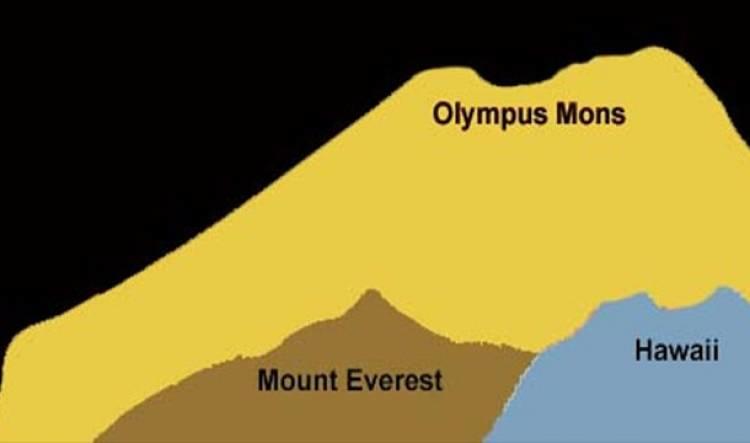
Olympus Mons is gigantic. It's so tall, in fact, that it almost punctures the Martian atmosphere and sticks out into space. Even the comparatively primitive telescopes of the late 19th Century could make it out from Earth, and our best estimates suggest it would take anywhere between six months to a year to climb it. The slope is very gentle, and you could walk up it without feeling the effect of the rise, but a combination of low oxygen and freezing temperatures towards the summit would present their own risks. And that's before you take into account the fact that it's an active volcano. So perhaps best not!
Remember we just told you that the slope was very gentle? Well, here's the side effect of that. For a gentle slope to turn into the highest known point in the universe, it has to be wide. Very wide. Wider, in fact, than your eyes can take in.

Olympus Mons is sixteen miles high at its peak, but it's also 374 miles in diameter. To give you a comparison, that's more or less the same size of the entire state of Arizona. Because of that, if you stood on the edge of the caldera - a sort of crater left by the collapse of a magma chamber - everything around you for as far as your eyes can see would still be the mountain, and the base of the volcano would be over that visible horizon.
Do you know what the classic image of our Milky Way galaxy looks like? All yellow in the center, with two milky-blue arms spiraling away into the blackness of space, right? Wrong. It's taken a few decades of scientists arguing over it to reach that conclusion, but we can now say it's definitely wrong.
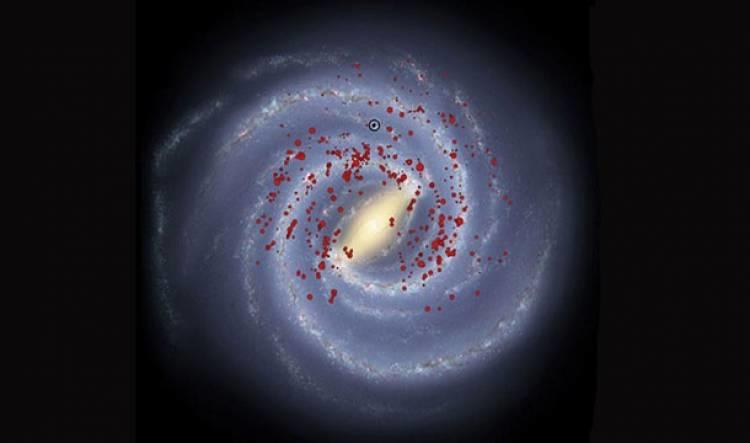
The 'four arm' theory was first proffered by astronomers using radio telescopes in the 1950s, but seemed to be countered when NASA's Spitzer space telescope recorded images of a two armed galaxy in 2008. After poring over the detail and conducting further study, they concluded that because Spitzer works on infrared, it only sought out comparatively lighter, cooler stars like our own Sun. Because of that, it was blind to supermassive hot stars which stay closer to the center of the galaxy, forming smaller, secondary arms of their own.
We're not saying that scientists sometimes have too much time on their hands, but around ten years ago, some of them were searching for evidence of amino acids in space and decided to work out what the center of the Milky Way might smell and taste like. This is what they came back with.

Right in the center of our galaxy is a dust cloud called Sagittarius B2, and by focusing on this cloud with a radio telescope, researchers picked up traces of ethyl formate, which is the chemical that gives raspberries their flavor - but also when isolated, smells like rum. So basically, being at the center of our home galaxy is like drinking an expensive cocktail. We wouldn't suggest doing so, though - also recorded within the cloud was propyl cyanide, which is lethal to humans.
We're always told that space is pretty much full of nothing - a vast emptiness with the occasional star or planet hanging in it. So, you probably wouldn't expect it to have any kind of smell at all - and that's where you'd be wrong.

The people who'd know best - i.e. astronauts who've actually been out there - report that it has a strong and memorable aroma, although what that aroma is depends a little on which of them you ask about it. When returning from spacewalks, and removing their spacesuits, all of them say a heavy stench clings to the helmet, suit and gloves, as well as any tools they've used. Don Pettit, an astronaut in 2003, compared it to the smell of a welding torch he'd used in his youth, whereas others have reported something more akin to seared steak. Scientists believe it's probably the result of high energy vibrations coming from nearby ion particles.
We don't want to worry anybody, but the world seems to be slowing down. The rotation of our planet on its axis is definitely and measurably reducing in speed and may one day stop completely.
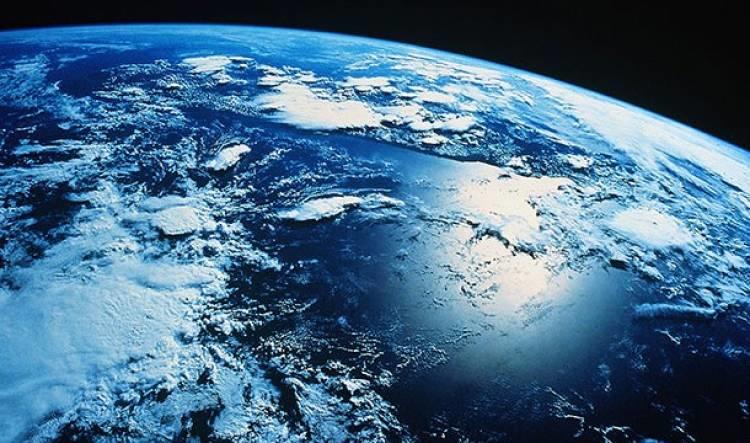
The good news, though, is it's going to take a while. At a rate of around 17 milliseconds per century - providing of course that the rate of slow down doesn't increase - we won't see an Earth day go from 24 hours to 25 for approximately two billion years. The slowing effect can mostly be blamed on the Moon - the impact of our satellite's gravity on our oceans creates tides, which gently drag back against the turn of the Earth on its rotation, slowing it down by an infinitesimally tiny amount on each spin.
Ever had one of those days that feels like it took a year to pass? If we ever find life on Venus, don't mention it to one of the residents. They're unlikely to have a great deal of sympathy.

Despite being almost the same size as Earth, its closer orbit around the Sun, along with its curious rotation (it spins in the opposite direction to the Sun and most known planets) and the fact that it doesn't tilt on its axis, means the way that its days and nights work are completely different. For Venus to complete one rotation takes 243 days. By that time, it will have completed a full trip around the Sun, which takes it only 225 days. A whole year will have passed before the day is out.
There's a famous movie which used the tagline 'In space, no-one can hear you scream'. As it turns out, crying won't do you much good either. Space just isn't a good place to become terrified or upset, the environment conspires to work against you.

Canadian astronaut Chris Hadfield, who spent time on the International Space Station in 2013, took a wide number of questions from Earth, including 'what happens in space when you cry?' He demonstrated the answer on a YouTube clip, and showed that although tears can form, in a zero-gravity environment there's nothing to make them fall. They just stick to your face, forming an ever-growing bubble of water that will eventually spread and cover both eyes, or perhaps your nose. It's probably a good idea to take hankies with you and avoid watching tear jerkers to pass the time.
If you're getting married, and your partner tells you that they want the biggest diamond you can find, they might live to regret it. As of 2011, we can confidently say that the biggest diamond we're aware of is five times the size of the entire Earth.
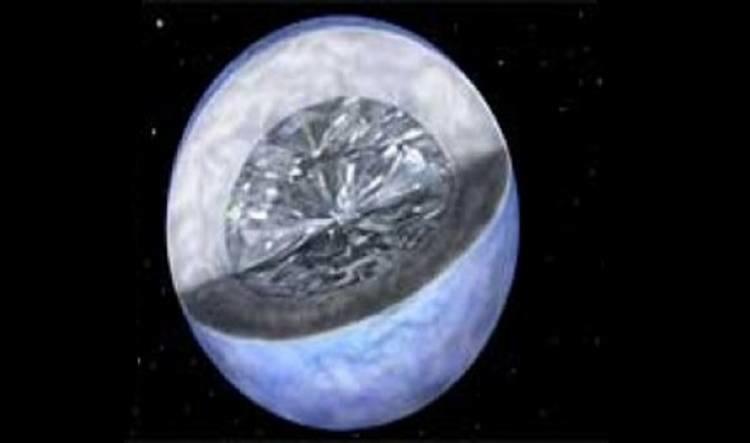
Situated around 4,000 light years from Earth, one of the stars that makes up the constellation of Serpens - a star named PSR J1719-1438 - has a curious companion; a comparatively tiny planet that circles around it in an intensely close orbit. Scientists believe that this is all that remains of what was once a companion star to PSR J1719-1438, which siphoned off all of its outer layers over millions of years leaving it as a tiny white dwarf. Now all that remains is an outer layer of oxygen, and its core of pure carbon, which we can tell from its mass is crystalline and almost certainly diamond. Getting close enough to mine it might be an issue - it's so close to the parent star that its year is only two hours long.
Some things weigh more than others. That's not news to anybody - if you lifted up a plastic chair, and then lifted up a wooden one, you'd expect the wooden one to be harder to pick off the floor. Stars can be made of different materials, too, but the differences in weight are literally astronomical.

Neutron stars are what's left when huge stars - those four or more times larger than our own Sun - explode. The remaining matter at the center is compacted so tightly and so densely that a single teaspoon of the material would weigh around a billion tons. To give you a more visual idea, that's as much as 900 times the Great Pyramid of Giza. The gravitational field is so strong that escape is possible only at speeds of 100,000km/s or more - and if you fell onto it from only one meter above, you would hit the surface at four and a half million miles per hour. At such a force, your component atoms would be destroyed, vaporizing you.
We sent it on a mission to go out among the stars and tell us about everything we saw - but even its creators didn't expect it to get this far. The Voyager 1 Spacecraft has now passed the outer reaches of our Solar System and is drifting on through interstellar space; yet amazingly, it still manages to communicate with Earth.
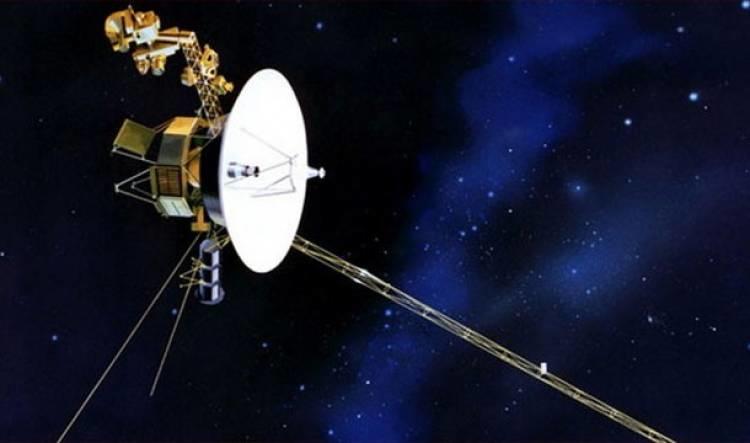
Launched over 40 years ago, Voyager's original mission was to pass several of the planets close to Earth and tell us more about them, with radio and photographic records being obtained and sent back to Earth. Having done all that, and survived long past its expected obsolescence, it passed through the heliopause at the edge of the Solar System in April 2012, journeying onward, past the gravitational reach of the Sun. It still has some functionality, taking readings of particles and cosmic rays and sending them back home at regular intervals. NASA believe it will finally lose power somewhere around 2025.
We invite you to step back and take a moment to consider this photo, and what it represents. This is 'Pale Blue Dot' and is the final photograph Voyager took as it made its way out of our Solar System, as part of its 'Family Portrait' series of pictures, each one detailing the planets of our galactic neighborhood.
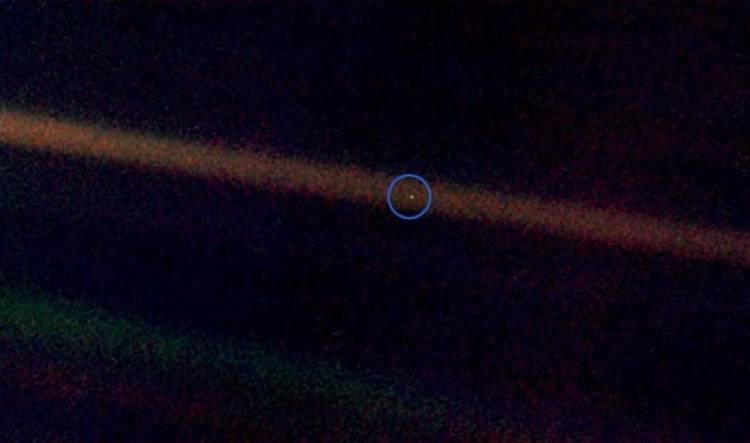
Taken at the request of astronomer and author Carl Sagan, the image shows a tiny, one-pixel speck suspended in reflected sunlight. That is Earth, our home, as seen from 3.7 billion miles away. Every life, death, love, loss, war, empire, famine and feast humanity has ever known has taken place on that little dot, so small and insignificant when juxtaposed with the background of space. Some people find it inspiring, and others find it makes them feel like everything is pointless. How do you react to it?
The problem with garbage disposal in space is that nothing every really goes away. It drifts along towards the nearest object that has a gravitational field and starts orbiting around it. After years of launching rockets, doing spacewalks, building space stations and installing satellites, we've created something of a garbage problem around the Earth.

We currently estimate that there are 8,000 individual bits of 'space junk' floating around up there, although that number grows all the time, and the more there is, the more of a hazard it poses. Once in full orbit, the junk whips around the world at 17,000 miles per hour - fast enough for it to completely destroy a television or radio satellite if it hit one. The debris is mostly made up of older, dead satellites, along with booster rockets and leftover detritus from space station construction - there are even astronauts' dropped tools and gloves up there. Discussions about what to do about it, and how to clear it before it forms a mesh that endangers future space missions, are ongoing.
Many people have reported looking up at our satellite, the Moon, and seeing a man's face on the surface. We should start eyeing him with a little more suspicion, because he's trying to escape. With every passing year, the Moon is a little bit further away from us.
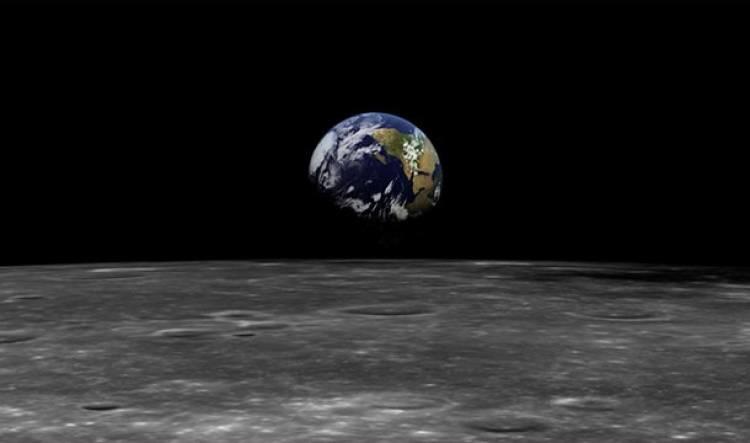
Because of the interaction between the Moon and the Earth's tides, the Moon is experiencing a very gentle repulsion. The Moon's gravity causes the tides in the first place, but the tides in turn generate a 'tidal bulge', generation friction during the rotation of the Earth that, in turn, pushes back against the Moon. Its current rate of retreat is 1.5 inches per year - about the same speed your fingernails grow - so we don't need to worry about it disappearing just yet. That's just as well really - without it, the Earth may stop spinning completely.
Okay, so imagine you had a really big bathtub. No, bigger than that. We need to fit an entire planet in there, and not one of the small ones either - Saturn! If you can picture such a thing and fill it with water - and if you can calculate how much water you'd need you're more gifted than us - you may be surprised to hear that Saturn would float if you placed it gently into the tub.
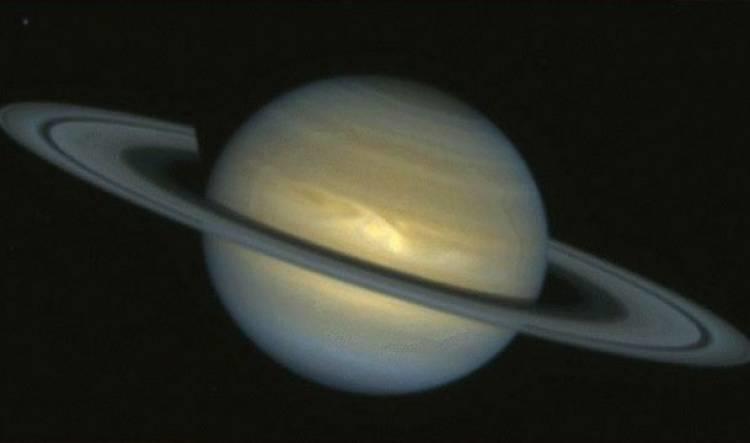
Saturn is the least dense of all of our neighboring planets; it's entirely made up of hydrogen and helium. Because of this, it has less density than water on Earth, meaning we can be certain of its floating properties. A beautiful world to look at, famous for its elegant rings, we believe the core of the planet is made up of metallic hydrogen but can't be sure, because the phenomenally high temperatures and pressures needed to create it can't be replicated on Earth in order to study.
We've talked a few times on this list about the sheer size of the Sun. You could fit the Earth inside it a million times and still have room to spare. It takes an individual photon of light 170,000 years to get from its core to its outer edge. So what if we told you that, on a galactic scale, it's actually pretty feeble?

The largest star scientists are currently aware of is UY Scuti, which is 9,500 light years away and forms part of the constellation of Scutum. It is almost exactly 1,708 times larger than our own Sun. To give you an idea of what that means in terms of our Solar System, if you swapped out our Sun and put UY Scuti in its place, its outer edge would touch on the orbit of Saturn, and Mercury, Venus, Earth, Mars and Jupiter would be completely swallowed up inside it.
There's a lot of sand on this planet. The Sahara Desert is full of it, for one. And then there's the Gobi Desert, and the Kalahari Desert, and all of the other deserts and beaches on coastlines and water's edges all over the world. Every beach you've ever walked on was made up of millions of grains of sand, and if you add all of those grains together, you're looking at trillions - a number so high the brain struggles to deal with it.
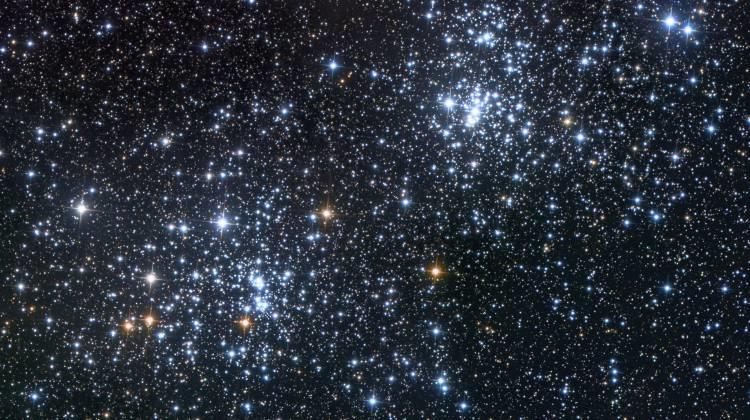
Staggeringly, though, there are not as many grains of sand in the world as there are stars in the universe. Scientists have verified over 300 billion stars in the Milky Way alone, and the number for the observable universe - note that isn't the whole universe, just the parts we can currently see - that number becomes 70 billion trillion.
Because the Moon is so close to us, and we've landed there already, we sometimes take it for granted, or worse still, underestimate how far away it actually is. In truth, the distance between the Earth and the Moon is enormous. So much so that you could fit every planet in our Solar System between here and there, and there would still be room to spare.

The distance from here to the Moon (although it's moving as we said before!) is 239,000 miles - more than enough room to squeeze the planets in, even Jupiter with its incredible size. Jupiter would soon be the last planet standing though - if they were all assembled so close together, the competing gravitational fields would rip all of the other planets apart and leave them all as rubble orbiting the gas giant.
America took great pride in its achievements when it put the first man on the moon - and since then it's been back several times, conducting research missions. On every occasion, the crew of the successful mission has left the Stars and Stripes on the surface. Apollo missions 11, 12, 14, 15, 16 and 17 all left their mark on the surface.
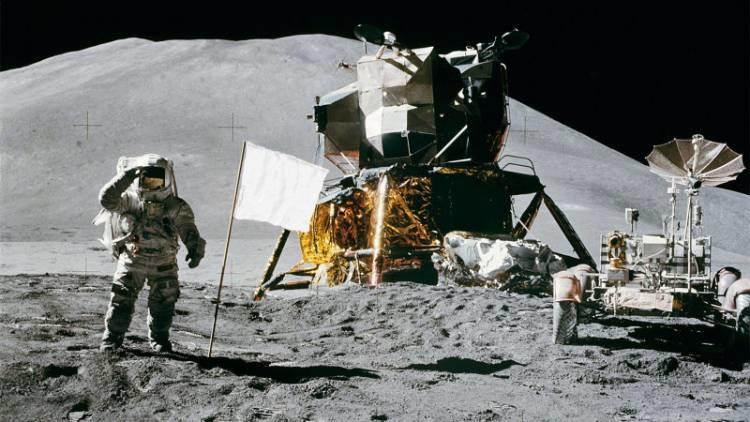
Amazingly, all of these flags are still on the Moon's surface and can be seen by powerful telescopes. They're all still standing with the exception of one - the very first. By Buzz Aldrin's own admission, they planted it too close to the Command Module, and it was knocked over when it took off to rendezvous with its parent ship in orbit. There is however one drawback - they're no longer really American flags. Because the Moon has no atmosphere, the flags have had years of direct exposure to the Sun's UV rays - bleaching them completely white over time.
As an example of what can be achieved by human beings working together, you would be hard pressed to find better than the International Space Station, or the I.S.S. as it's more commonly known. The building of the station, which commenced in 1998, has involved contributions from the American, Russian, European, Canadian and Japanese space agencies.
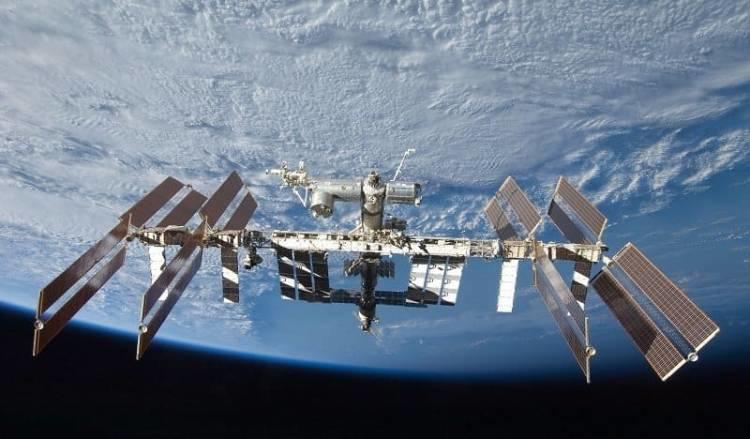
Housing astronauts all year round, having been the temporary home of over two hundred of them so far, and orbiting the Earth once every 90 minutes, the International Space Station has thus far cost a grand total of $157 billion. That cost will continue to rise as further improvements are made to the station, with fresh facilities and features added. Astronauts on the station experience growth of over two inches during their stay - an effect of living in a zero-gravity environment!
Our Sun is one of the calmer stars in the known universe - especially when compared to some of the giants out there which routinely emit gigantic solar flares. But even our Sun will grow to become a threat to us one day.
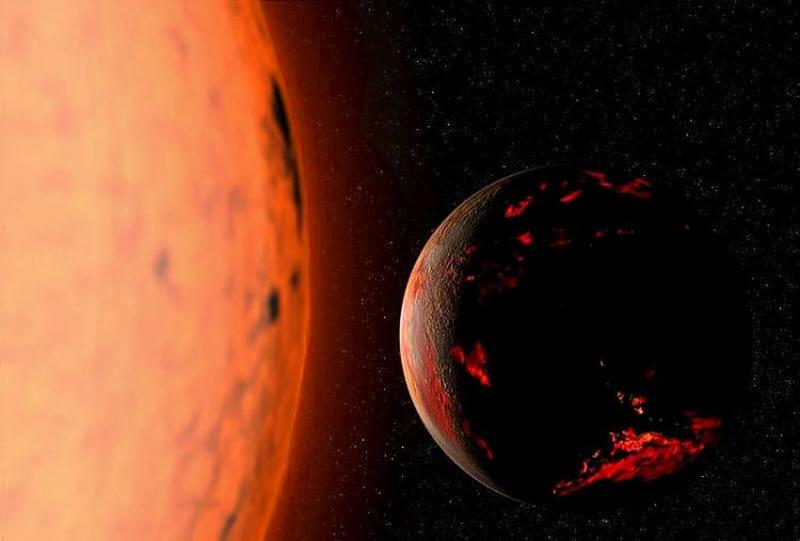
To give it a cosmic classification, our Sun is currently a yellow dwarf star. As it approaches the end of its natural life and is no longer able to carry out fusion, it will eventually become a white dwarf. Before it reaches that stage, though, it will briefly (in universal terms) become a red giant. That won't be good for Earth, because as a red giant, the Sun will expand to a size where it reaches our orbit and engulfs us. Not that anybody will be left to see it, because the rapid expansion of the star would have long since burned everyone to death. On the bright side, if you'll excuse the pun, we have a long time to come up with a survival plan. The estimated life of our Sun is 10 billion years, and we're only somewhere around half the way through it.
Galaxies are, in real terms, just stars clustered together, marking them out as different from the empty space around them. For a long time, scientists wondered what drew stars together like this in the first place - and now we know it's something sinister. Specifically, it's a supermassive black hole.
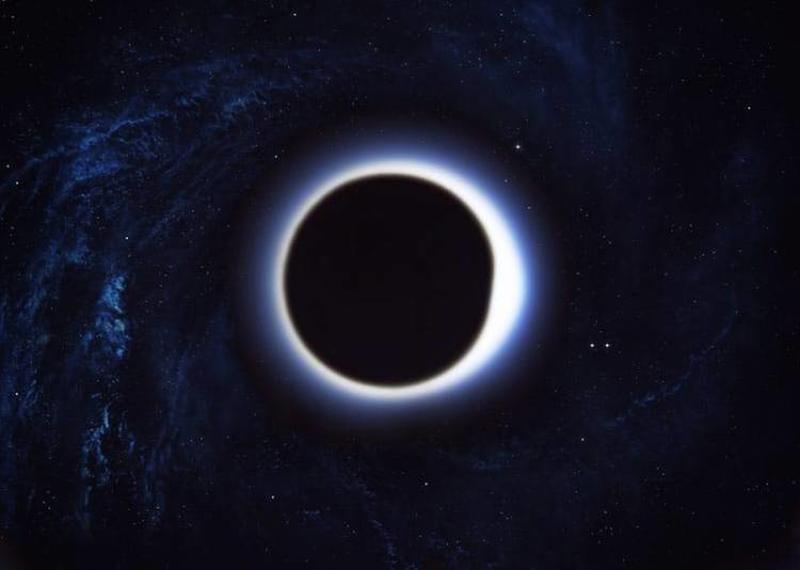
Supermassive black holes distinguish themselves from more regular black holes purely by size - Sagittarius A sits at the center of the Milky Way and as such is 'our' black hole and is a million times larger than Earth. Its density is beyond imagination, having the mass of four million Suns. There is one at the center of almost every galaxy we've been able to study in detail, and all of the stars rotate around it - more than likely destined to one day fall in.
Not content with having the largest mountain and volcano we're currently aware of, Mars has gone ahead and claimed the largest valley as well. Here's a twist, though - we have n idea how it got there.
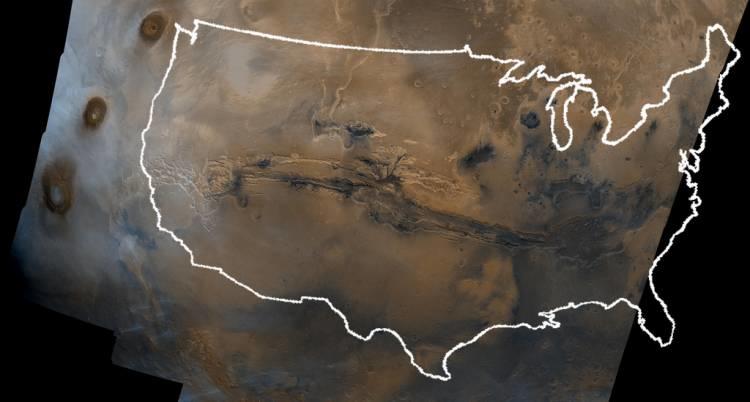
Valles Marineris, as it's known, was first spotted in 1971 by Mariner 9. Putting the Grand Canyon to shame, it's 2,500 miles long - about as long as the entire United States of America! We are yet to locate any evidence of tectonic plate activity in Mars, which leaves scientists puzzled as to how the valley came to be formed; one theory is that a chain of volcanos on the other side of the planet exploded with such force that the entire crust of the planet was bent, and Valles Marineris is the resulting scar.
If you've seen pictures of Jupiter in the past, you've probably seen one of its most distinctive features - a lively red spot in the lower hemisphere of the gas giant. But that isn't a blemish or a geographical feature - it's a terrifyingly powerful storm.

It would be impossible to stand on Jupiter - there is no surface, and the planet is comprised mostly of gas, with some liquid elements. The gases - a non-breathable blend of ammonia, ammonia hydro-sulfide, helium and hydrogen - are whipped across the surface at speeds of up to 400mph, giving the planet its striped appearance. The storm that comprises the red spot is self-contained, though, and nobody knows why. What we can tell you is that it spins, like a cyclone, and is enormous; at its widest it is more than three times the diameter of Earth. First noticed by astronomers in the 1600s, the storm has been raging for well over 400 years and possibly more, but in recent years does seem to have shrunk. It may one day finally end and disappear.
If you took two clean, polished, identical wrenches into space, and then touched them together, you would end up with one large, misshapen wrench. The two wrenches would fuse together as if they'd been welded, without any application of heat or any pressure on your part. This is an effect known as 'cold welding'.
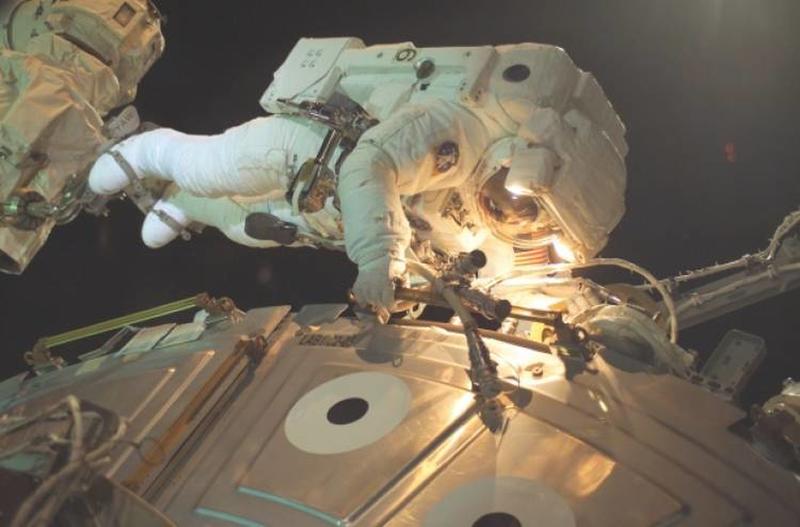
Cold welding occurs because space is a vacuum. It couldn't be achieved on Earth because metals form a protective oxide layer from being exposed to the atmosphere. In space, with no atmosphere, there is no way of the atoms from the two individual wrenches 'knowing' that they're not part of the same wrench, so they bond together and fuse. It's an issue that spacecraft and satellite designers have to bear in mind - and possibly also has beneficial implications for steel construction within a vacuum on Earth.
Consider everything we've discussed so far on this list - the gigantic suns, the supermassive black holes, the faraway galaxies, the millions of new stars that are born every day. It's a lot of stuff, right? Well, that only accounts for 5% of the universe. At most. Everything NASA - along with every scientist in human history - has recorded amounts to that tiny percentage of what makes up the universe. Of the rest, 70% is dark energy, and a further 25% is dark matter.
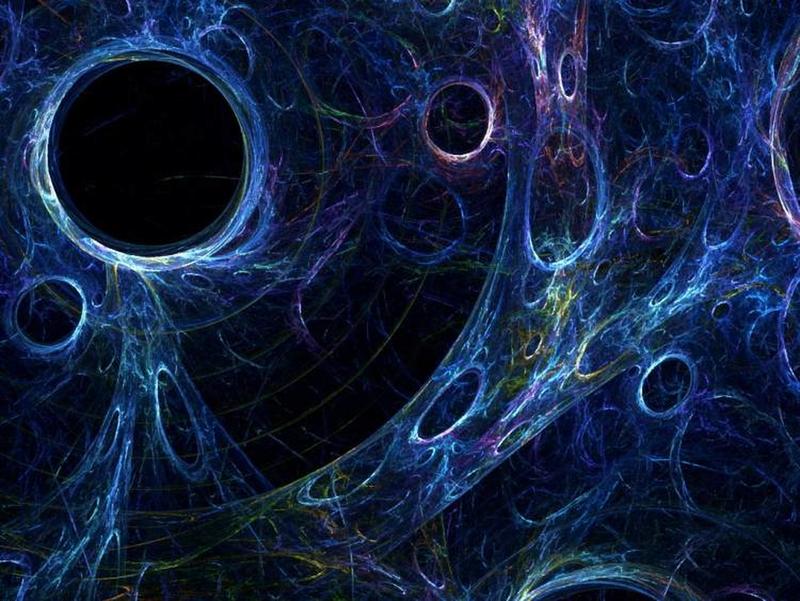
So, what is dark matter? Well...we don't know. We're still working on the theory. We know it's there, because of the way that its mass affects gravity, and without it, there are a number of galaxies that would lose form and spin apart, but that's all we know about it. It's called 'dark' because it doesn't respond to any of our telemetry and it doesn't emit any light or radiation, making it incredibly difficult to detect.
Everything we've done, from the moment we stumbled out of our caves and began to dress ourselves in fur, all the way through the Ice Age, the Dark Ages, the Roman Empire and two World Wars, right through to the present day with our smart phones and high-speed internet, has been but the blink of an eye in terms of the age of life on Earth.
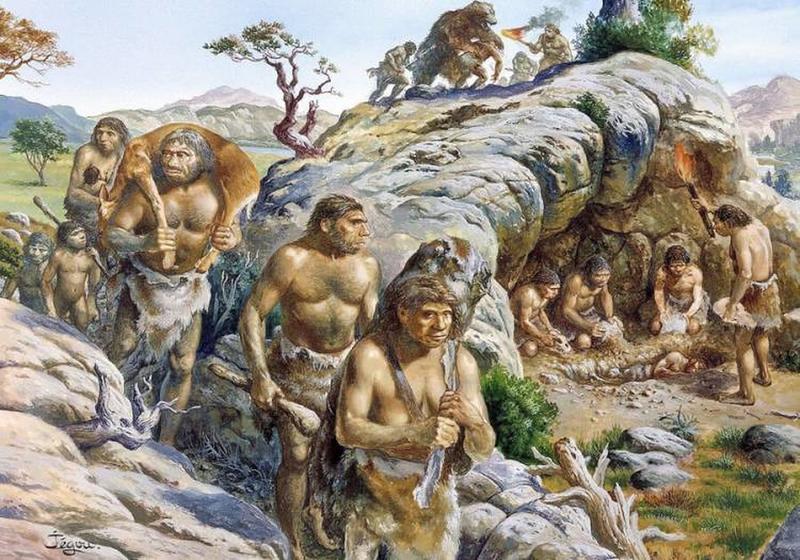
Although it's impossible to date the age of the Earth precisely, geologists agree that life began on our home planet somewhere between 3.5 and 3.8 billion years ago, and of that time, humans have only existed for somewhere between 5 and 7 million years. That's somewhere between 0.13 and 0.2% of Earth's life-bearing history. Ever wondered why aliens haven't visited yet? Maybe they came by this planet millions of years ago and found nobody home.
Doing anything in space is dangerous - you're removing yourself from a planet where there's gravity to keep your feet on the ground, and air for you to breathe, and deliberately putting yourself somewhere neither of those things exist. But even going to sleep is a life-threatening event for an astronaut.
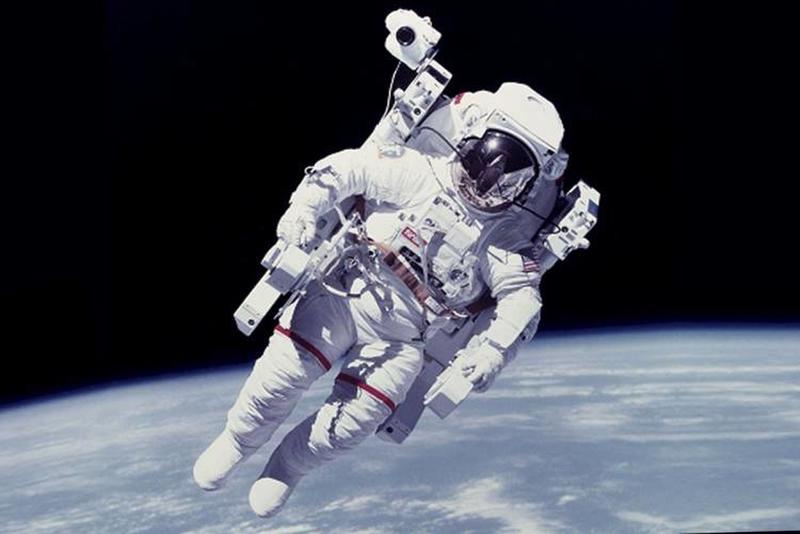
Whilst we sleep, staying mostly in one space, we exhale carbon dioxide. Because of the lack of gravity to affect it in space, the carbon dioxide just stays where it is, and can slowly form a bubble around the astronaut's head, displacing oxygen and eventually causing asphyxiation as it's breathed back in. Most astronauts combat this by sleeping underneath ventilation fans to keep the air moving and eliminate the risk. As if there weren't enough to worry about already!
If you have a TV that's still capable of receiving analogue signals - or a non-digital radio - you've probably seen the interference that occurs between signals; you hear it as a crackle on the radio, and it appears like a snowstorm on television. The effect is caused by static, and about 1% of that static is left over from the Big Bang - the very birth of the universe.

At the time the Big Bang occurred, the universe was a in a hot, dense state, as you may have heard in the opening music of a TV show with the same name. This heat became what's now known as 'cosmic background radiation'. Because the universe was tiny at the time, the heat had nowhere to go, and has slowly spread and dissipated as the universe has expanded. In every cubic centimeter on space - including everything you can see right now - are around 300 photons of radiation left over from the universe's very beginning, some 13.7 billion years ago.
Now that scientists are fairly settled on the theory of the Big Bang, they've turned their attention to how they believe the universe is most likely to come to an end - and the options don't sound too appetizing.
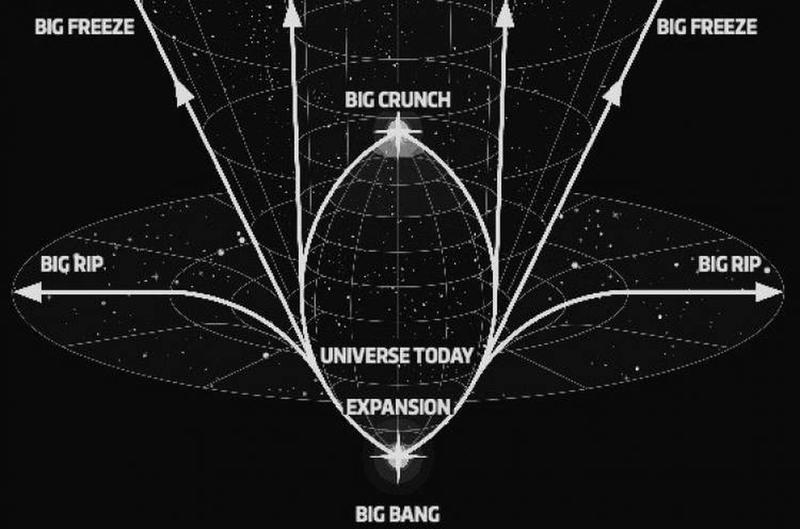
One model, termed the Big Crunch, speculates that when gravitational forces within the universe reach their outermost limit, they'll simply collapse back on themselves and shrink with incredible speed and force, condensing everything the universe contains into one microscopically tiny point, before ceasing to exist completely. The other option, the Big Rip, doesn't really hold all that much appeal either. This theory posits that the universe will eventually reach a heat death - a point where thermodynamic activity ceases and gravitational bonds fail. Eventually even the particles in atoms would lose their bond and simply float away from each other, as everything dissipates to nothing. On the plus side, this isn't scheduled to occur for billions upon billions of years, so neither we nor you will be around to see it.
Carl Sagan - the same Carl Sagan who persuaded NASA scientists to turn Voyager around and take the 'Pale Blue Dot' photo we mentioned earlier, gave a number of lectures in the early 1980s, during which he stated that human beings are composed of elements that originated within the stars themselves. And he's mostly right.
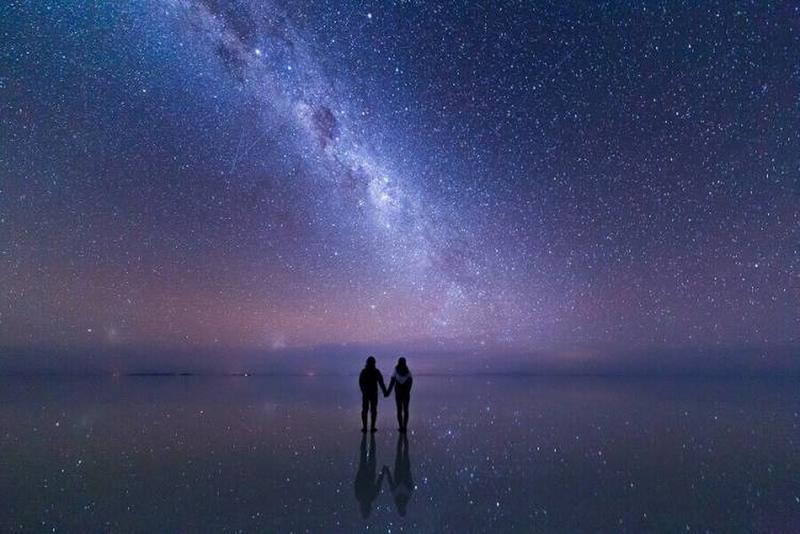
Originally, the universe was composed only of hydrogen and helium. Carbon - the base material which humans are made of- as well as nitrogen and oxygen - were created much later, in the hearts of stars. As these stars died, they exploded, expelling debris across space as a gas. Among these gases are element that eventually settled and became planets, and the building blocks of life itself. Without the birth and death of those early stars some 4.6 billion years ago, the conditions necessary for life to begin would never have been created, and you wouldn't be here right now to read this article. As Sagan himself said, "We're all made of star stuff".
The closest star to us is called 'Proxima Centuri', and from the name 'Proxima', you could be forgiven for thinking it must be quite close. In galactic terms, it is. In real terms, with our current capabilities, it really isn't.
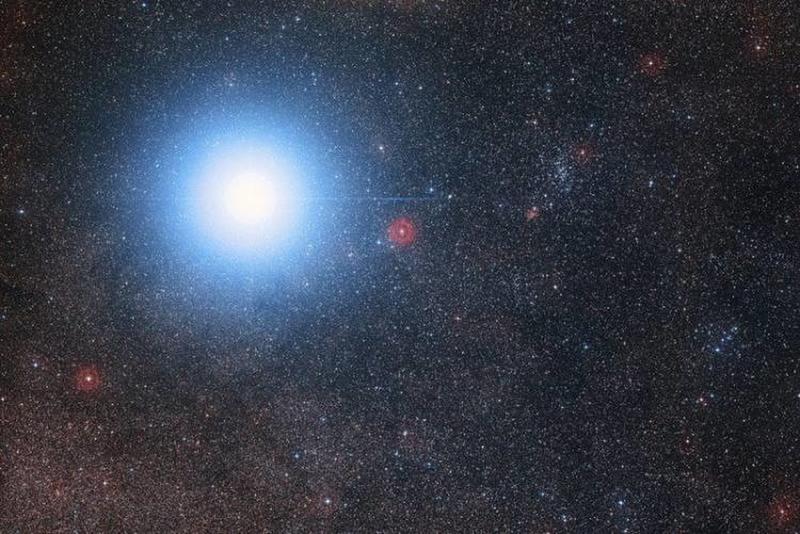
Proxima Centuri is 4.5 light years away, meaning quite literally that light takes four and a half years to get there. And we can't yet travel at the speed of light. Using the technology we currently have, and applying a lot of goodwill to it, our best option would appear to be nuclear electric propulsion, which is at the testing stage with several space agencies, and has the potential to be put to great use in interplanetary travel; it could reach Mars in as little as 90 days. To reach Proxima Centuri, however, would still take a little in excess of 1,000 years. We hope there isn't a galactic neighborhood notice board pinned up in one of the nearby star systems - at the moment we have very little chance of being able to read it.
One of the most upsetting things about outer space is that it's just so far away - we can observe supernovae and black holes and distant stars through telescopes, and receive radiation from the dawn of the universe, but with our current technologies we'd struggle to get to the most distant planets of our own solar system within the span of a human life, let alone beyond it.
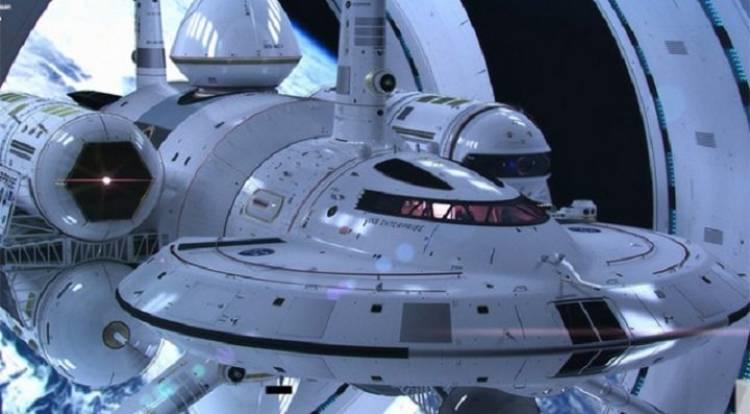
Work is ongoing constantly to change this. "Warp drives" may sound like the stuff of a very popular science fiction franchise, but an attempt to create a warp bubble in vacuum conditions was actually made by the Jet Propulsion Library in 2013, and the results were apparently 'inconclusive'. Whilst that doesn't imply great success, nor does it imply significant failure. Discovery of faster than light travel within our lifetime may not be completely impossible - but for now it remains the preserve of science fiction.
You shouldn't assume that you're outside the law just because you're in space. There is such a thing as space law, and virtually every major country in the world has signed up to it. The original signatories were the United States, the United Kingdom and Russia, back in 1967. As of right now, there are 107 sovereign states who have agreed to be bound by its rules.

Kept deliberately basic and designed to be a foundation set of rules which can be expanded upon by our space-faring descendants, it specifically bans the placing of weapons of mass destruction either in Earth orbit, on the Moon, or otherwise stationed in outer space. It also states that the Moon and other celestial bodies should only be used for peaceful purposes, and that that the testing of weapons on them is expressly prohibited. Going further, it states the intention that the exploration of space should be pursued peacefully and for the benefit of all States and all humankind - a noble sentiment if ever we heard one.
As well as having a film of junk floating around above it, and the constant threat of death by unexpected meteor strike, our planet has another thing to worry about - it's putting on weight. And there really isn't much we can do about it because the extra weight is falling out of the sky.

Every day, about 100 tons of meteoroids fall to earth; usually just fragments of space dust and debris, but occasionally full-sized rocks. Until recently, scientists didn't have any way of knowing where they were coming from, or predicting where they would land, but since 2011 they've been monitored by a series of smart cameras deployed by NASA, which track every item entering the Earth's atmosphere. Because the majority of the Earth's surface is uninhabited, the fragments usually land in the ocean, or on deserts, or in forests, so it's rare for you to find one in your back yard - but if you do, now you can log onto NASA's website and find out what is and where it came from.
The SETI project - the Search for Extra Terrestrial Intelligence - has been underway for years now, trying to attract alien attention to Earth by broadcasting radio signals and monitoring responses. For some scientists, however, contact has already been received, and there's measurable proof.

In 1977, the 'Big Ear' radio telescope in Ohio received a transmission that seemed to come from somewhere towards the constellation of Sagittarius and ticked all of the boxes for what an alien transmission should look like. The broadcast lasted for 72 full seconds, and although we have made multiple attempts to respond, has never been repeated. Despite this, no satisfactory scientific explanation for the broadcast has ever been found, and a broadcast from an alien civilization remains the most likely cause.
We really hope that human science advances dramatically in the centuries to come, because we've examined a number of doomsday scenarios facing human existence, and with our current knowledge we don't have answers for any of them. Here's another one to add to the pile - our galaxy is eventually going to crash into its neighbor.
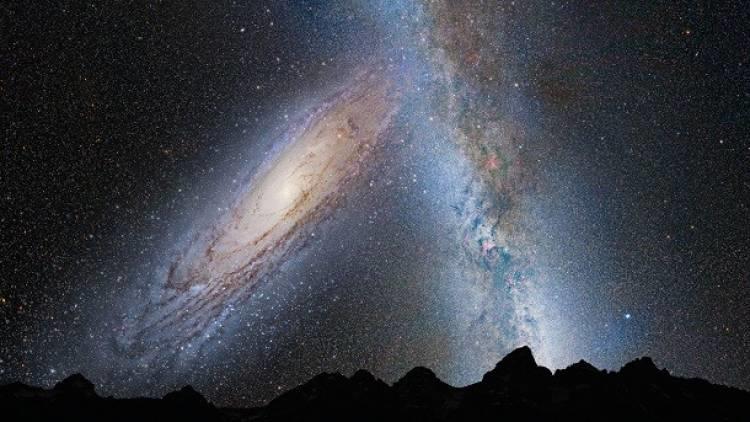
Andromeda is our closest celestial friend, and it seems to be in a hurry to meet us, because it's heading fight for us. The Milky Way must be just as keen though because that's heading for Andromeda just as fast. In fact, the two galaxies are driving dead on towards a collision at 250,000 miles per hour, with stars flying through the space between others and playing havoc with gravity, as well as creating a spectacular light show for anyone still living on Earth at the time. It's unknown whether it would be possible for life to survive the impact, and the galaxies would go on merging for approximately a billion years before settling down as a new, elliptical galaxy, but it will be around four billion years before we have to worry about if it they carry on at their current speeds.
Because our Sun is basically a giant ball of flame - and one we should be thankful for, because it keeps us all alive and warm - we've been conditioned to think that all stars are the same; massive fiery balls of gas that exist to provide heat and light for any planets in orbit around them. But this isn't the case.

There is a category of stars known as brown dwarfs, and to all intents and purposes they're failed stars. They have the requisite size, but lack the density required to begin fusing atoms, and therefore they can't burn for very long. Eventually they flicker out and cool down, with the coldest ones detected so far being around 80 degrees Fahrenheit; that's cooler than the human body, and cold enough to touch with the human hand. Because they emit no light, and exist in darkness, brown dwarfs are very hard to detect, showing up only on infrared telescopes, and even then, only when we're specifically looking for them. As such, some scientists believe they may be the components of mysterious 'dark matter'.
You've never actually sat or stood still in your entire life. It might feel like you are - perhaps even right now - but nothing could be further from the truth. Planet Earth, and the Sun, and the entire galaxy are constantly moving at speeds that are almost beyond the imagination.
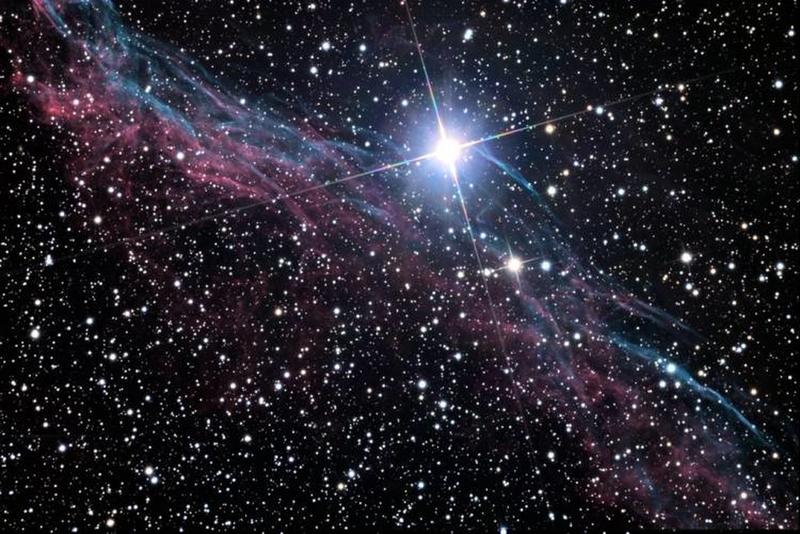
The Milky Way rotates at an incredible 140 miles per second and hurtles across space at 190 miles per second. If you take both speeds and factor them together, that means everyone on this planet is currently flying through the cosmos at 330 miles per second. That means that for every minute you're alive, you travel 12,000 miles through the universe. To give you an idea of how massive that distance is, if you traveled all the way around the world in a straight line, it would be a journey of 24,900 miles. That means every day you've been on a journey the equivalent of 694 world trips!
Despite everything we've covered in this article, the universe is still mostly unknowable. There is more to be seen than can ever be seen, and more to understand than can ever be understood. It would be the work of a thousand lifetimes just to understand everything that exists within the universe today; and that still wouldn't be enough, because by the time you'd finished, it would be so much bigger.
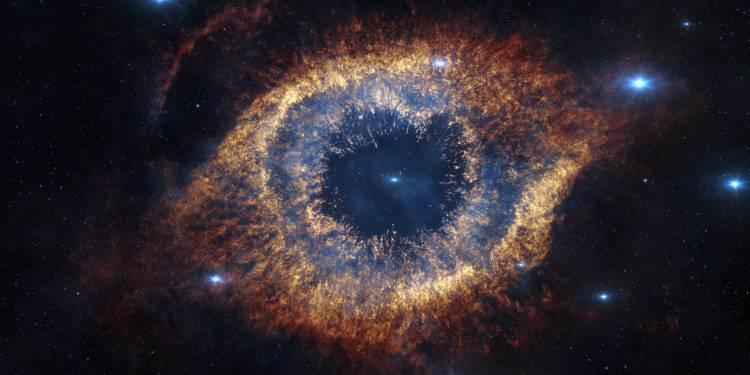
To give you the figures, it expands at about 46 miles per second for every megaparsec - a megaparsec being a space-time measurement that covers around three million light years. If that's a little difficult to get your head around, don't worry about it; rest assured that it's growing really, really quickly. As if that weren't enough, the expansion is speeding up - researchers in the 1990s were the first t notice that expansion was quicker than had been recorded previously, and in recent years the acceleration has been observed to be faster still. Scientists put this down to the effect of that same old secretive dark matter, but one thing remains clear. The universe largely remains just as massive, awe-inspiring, terrifying and mysterious as it was when our ancestors first looked up at the stars and wondered about the Heavens, thousands of years ago.